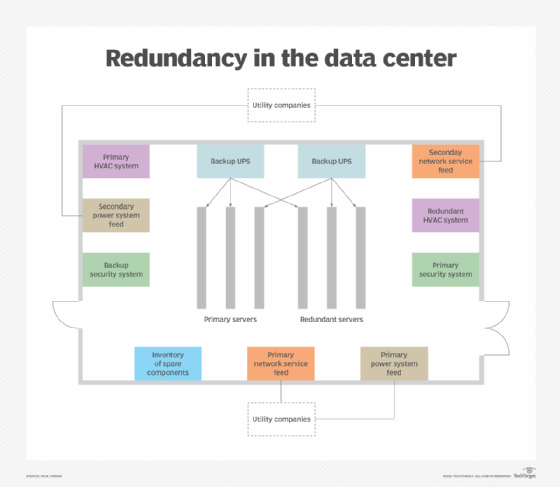Explained: If a Company Goes Bust Who Pays Redundancy in the UK?
Explained: If a Company Goes Bust Who Pays Redundancy in the UK?
Blog Article
Checking Out the Operational Characteristics of Business Redundancy and Its Long-Term Sustainability

Redundancy Methods for Company Connection
In order to make sure nonstop operations, services need to implement effective redundancy techniques for service connection. Redundancy in this context describes the duplication of essential elements or functions within a system to alleviate the effect of prospective failures. By integrating redundancy approaches, companies can improve their strength against disruptions triggered by various elements such as natural catastrophes, devices failings, or cyber-attacks.
One common redundancy method is the execution of back-up systems and information storage solutions. This entails creating matches of important data and systems that can be activated in case of a main system failure. Additionally, organizations can develop repetitive interaction channels and power sources to maintain connectivity and operations during unforeseen events.
Moreover, cross-training employees to perform multiple roles within the company can work as a valuable redundancy technique. This ensures that crucial jobs can still be accomplished also if crucial employees are inaccessible because of disease or various other factors. On the whole, effective redundancy techniques are important for businesses to promote operational connection and decrease the impact of possible interruptions.
Impact of Redundancy on Organizational Resilience
Offered the critical duty redundancy methods play in making sure business connection, checking out the effect of redundancy on business strength ends up being essential for comprehending the all natural functional characteristics of a firm. Redundancy, when strategically carried out, can significantly contribute to enhancing an organization's strength in the face of unforeseen difficulties.
Furthermore, redundancy can cultivate innovation and imagination within a company as employees really feel equipped to take calculated threats, recognizing that there is a security internet to sustain them in situation of failure. On the whole, the effect of redundancy on organizational durability is profound, forming the long-lasting sustainability and success of a company.
Stabilizing Performance and Versatility in Redundancy
Attaining an unified equilibrium between functional performance and flexible adaptability is a critical difficulty in the critical deployment of redundancy within companies. Too much flexibility without a strong functional structure can result in ineffectiveness and variance.
To stabilize efficiency and adaptability in redundancy preparation, organizations must carefully examine their operational demands, market dynamics, and critical objectives. Inevitably, finding the right stability in between effectiveness and versatility is crucial for constructing a lasting and resilient organization in the face of unpredictability.
Long-Term Sustainability Via Redundancy Preparation
To make sure enduring practicality and security, organizations have to tactically align their redundancy preparation with long-lasting sustainability objectives, consequently harmonizing functional effectiveness with flexible flexibility. Lasting sustainability through redundancy preparation entails even more than just short-term cost-cutting actions. It calls for a detailed tactical strategy that anticipates future obstacles and opportunities. Companies need to view redundancy not as a responsive solution to immediate troubles but as a positive approach for long-term success. By integrating redundancy planning with sustainability goals, companies can create a durable framework that can endure numerous market fluctuations and interior discover here modifications.

Aggressive Steps for Lasting Firm Operations
How can business proactively boost their functional sustainability for Recommended Reading lasting success? Implementing proactive steps is necessary for business intending to make sure lasting procedures.
In addition, promoting a culture of continual renovation and understanding within the company can improve adaptability to changing market problems and consumer demands. Urging staff member involvement in decision-making procedures and giving chances for expert development can improve spirits, productivity, and overall efficiency. Establishing clear objectives, keeping track of essential performance indications, and regularly reviewing development are essential elements of proactive sustainability monitoring.
Collaborating with vendors, customers, and other stakeholders to promote lasting methods throughout the supply chain can create a ripple result of positive influence - redundancy pay if company goes bust. By taking positive steps in the direction of functional sustainability, firms can build resilience, drive innovation, and secure their lasting success in an ever-evolving service landscape
Verdict

In the world of business management, the calculated release of business redundancy stands as a crucial yet detailed practice that requires a fragile equilibrium between operational performance and lasting practicality. By studying the operational characteristics that underpin company redundancy and evaluating its broader effects for business strength and adaptability, a nuanced understanding of just how redundancy approaches can form the future trajectory of a company starts to unfold.Offered the critical function redundancy methods play in ensuring service connection, checking out the impact of redundancy on business durability ends up being imperative for comprehending the alternative operational characteristics of a firm. On the whole, the impact of redundancy on organizational resilience is profound, shaping the long-term sustainability and success of a official website business.
In conclusion, recognizing the functional characteristics of company redundancy is critical for ensuring lasting sustainability.
Report this page